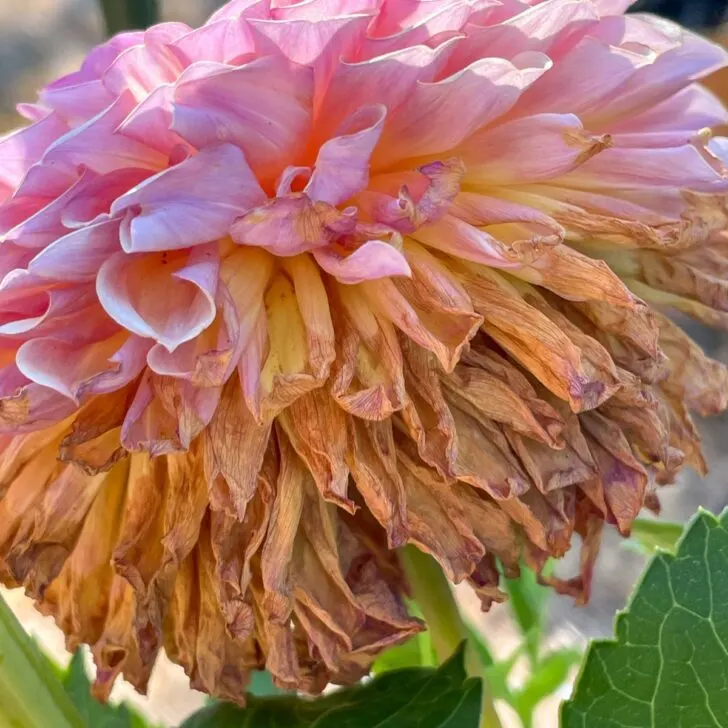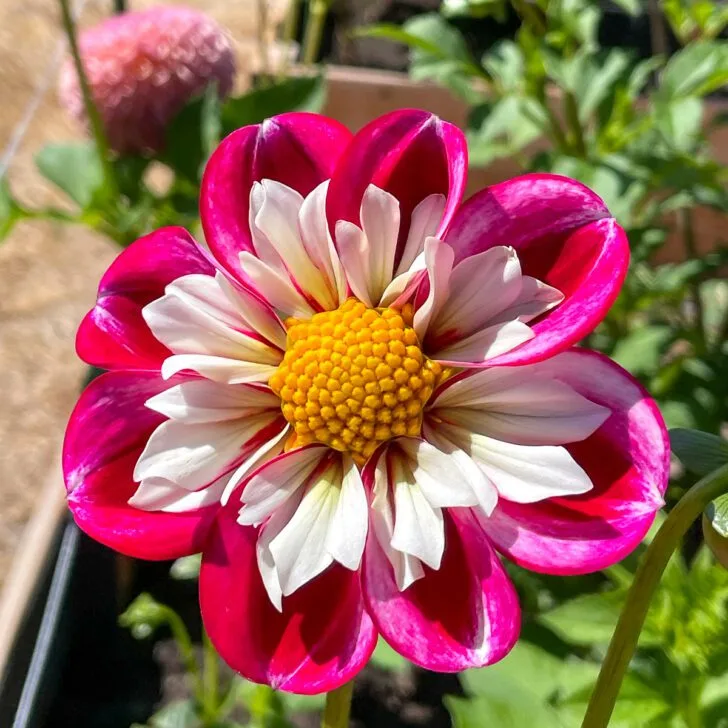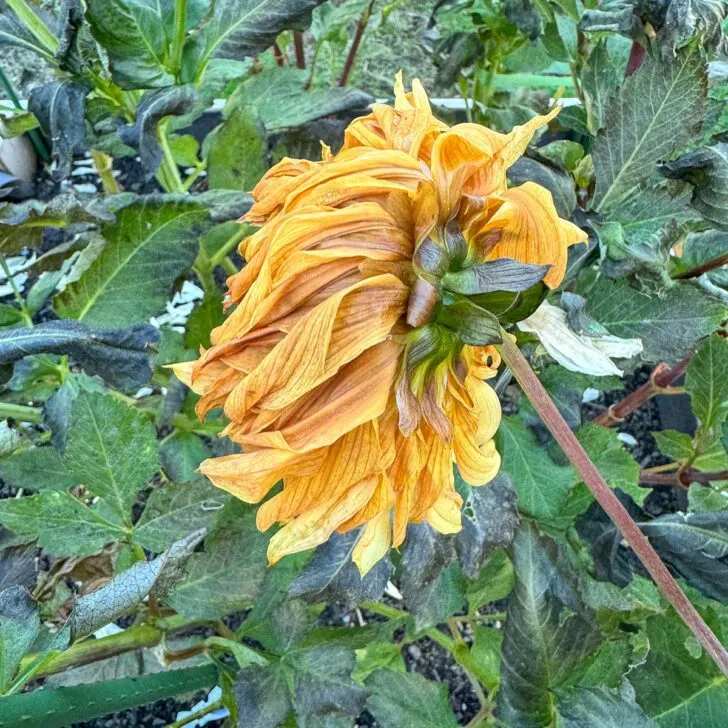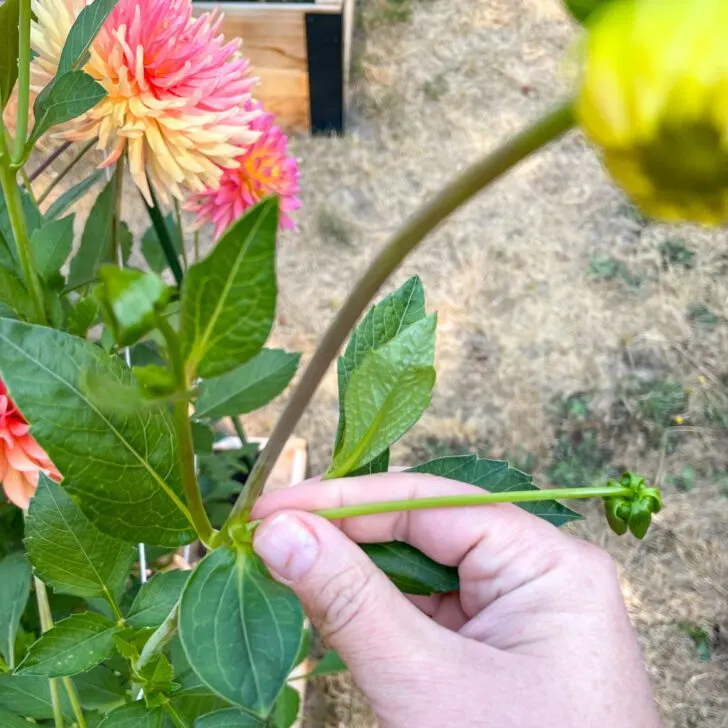Find out why are your dahlias aren't blooming in your garden and learn effective ways to encourage those gorgeous flowers to show themselves!

Dahlias are one of my favorite plants to grow, with a wide range of colors and impossibly huge flowers. Gardeners everywhere eagerly anticipate the moment their dahlias burst into bloom.
But what happens when that eagerly awaited moment never comes, and the dahlias stubbornly refuse to flower?
This article will go over the possible reasons why dahlias might not bloom, delving into the common pitfalls and misunderstandings that can hinder their flowering, and how to overcome them.
This post contains affiliate links for your convenience. Purchases made through these links may earn me a small commission at no additional cost to you.
Soil conditions
The importance of well-drained, nutrient-rich soil for dahlias can't be overstated. If you don't have these two elements, your dahlias might not bloom.
If your soil is too heavy and clay-like, it will hold onto moisture and cause the dahlia tuber to rot. If it's too sandy, water drains away before the plant can draw it up.
Our native soil is quite light and sandy. While this is beneficial for tuber formation, it doesn't hold onto moisture. I typically need to water every day during the summer in order for my dahlias to thrive.

Adding compost or well-rotted manure can improve soil texture and fertility. Use a soil testing kit to help determine what specific nutrients might be lacking, and amend the soil accordingly.
Over-fertilizing, particularly with a fertilizer high in nitrogen, can lead to lush, vigorous leaf growth at the expense of flower production. Look for fertilizers like this one with lower nitrogen (the first number on the NPK list) that are formulated for flower production.
Incorrect planting
Planting time, depth and spacing are crucial factors that can greatly affect the blooming of dahlias. If these aspects are not done correctly, the plants might struggle to grow and flower.
Timing
You don't want to plant your dahlias right after your last frost date. The ground is way too cold, and your tubers will struggle to grow. Wait until the soil temperature is at least 50 degrees before planting your dahlia tubers outside.
You can give them a jump start by pre-sprouting them indoors. I do this in quart-sized plastic bags to check if my dahlia tubers are viable before planting them out when the weather warms up.
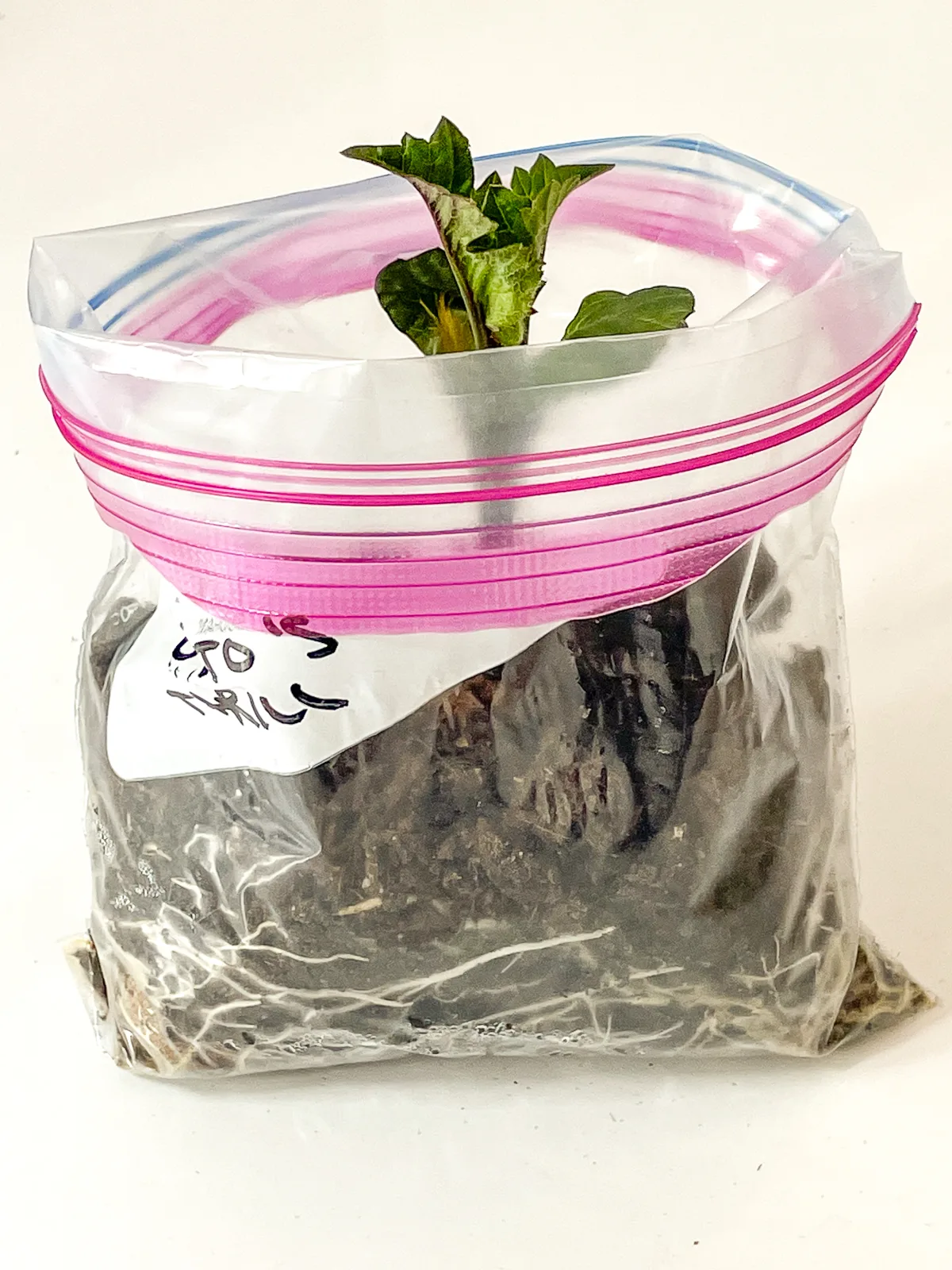
Planting depth
A common mistake is planting the tubers too deep or too shallow. Planting them too deep can cause rotting, while planting them too shallow may leave them exposed to drying out.
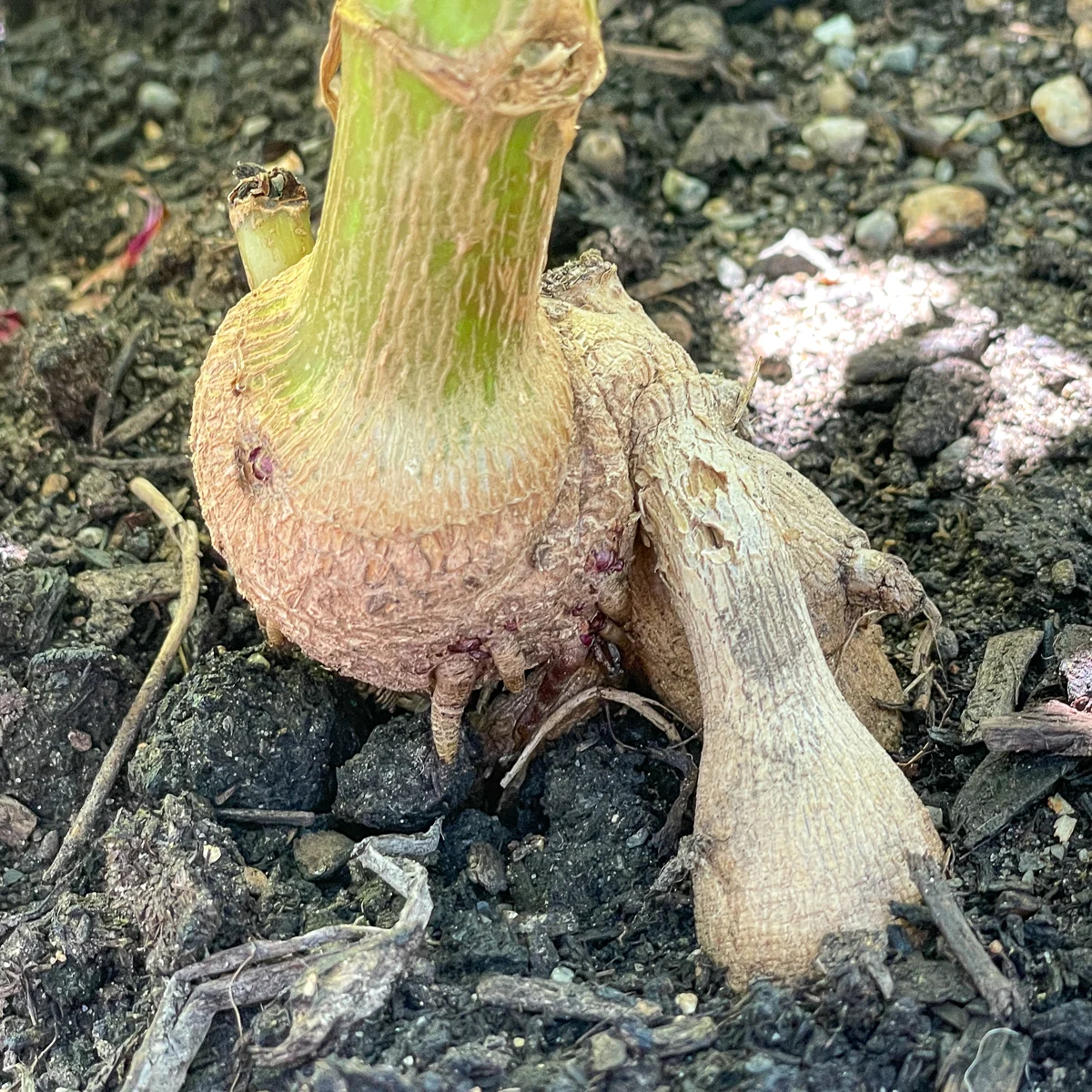
Spacing
Spacing is another aspect to consider. Dahlias can grow up to five feet tall and a few feet wide, and planting them too close together can lead to competition for nutrients and sunlight.
When I planned out my dahlia garden, I checked the average height of each variety first. The taller ones were planted on the north side of each raised bed, so they don't shade out the shorter plants and prevent them from blooming.
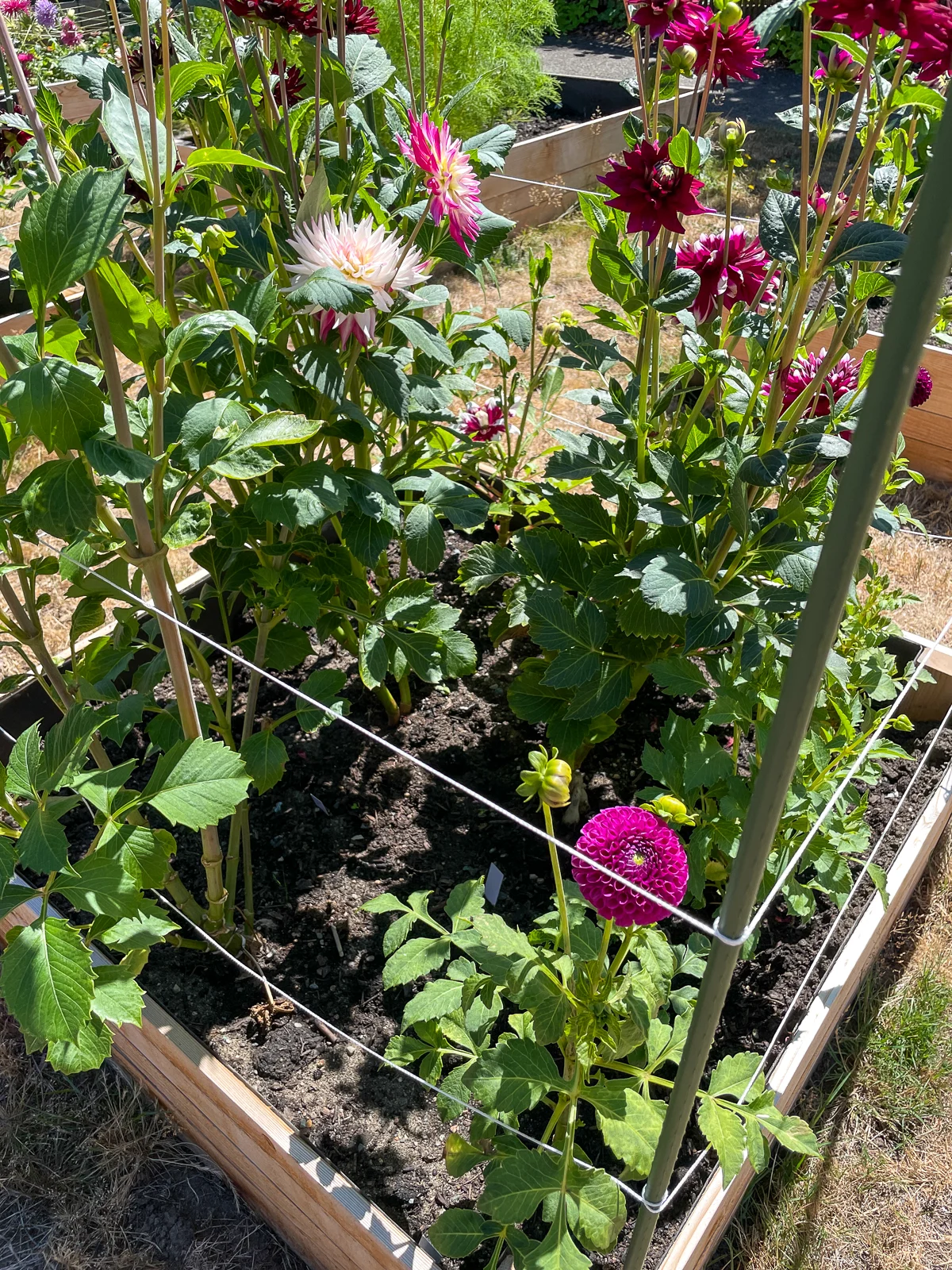
Watering issues
Watering plays a significant role in the health and blooming of dahlias. Striking the right balance can be a bit tricky, as both overwatering and underwatering come with their own set of problems.
Overwatering can lead to root rot, a condition that not only hinders blooming but can also kill the plant. Underwatering, on the other hand, can cause the plant to become stressed and hinder bud formation, leading to a lack of blooms.
To maintain proper watering, use methods that provide a consistent and controlled amount of water. Drip irrigation systems can be a great way to do this, as they deliver water directly to the roots, minimizing waste and preventing overwatering.
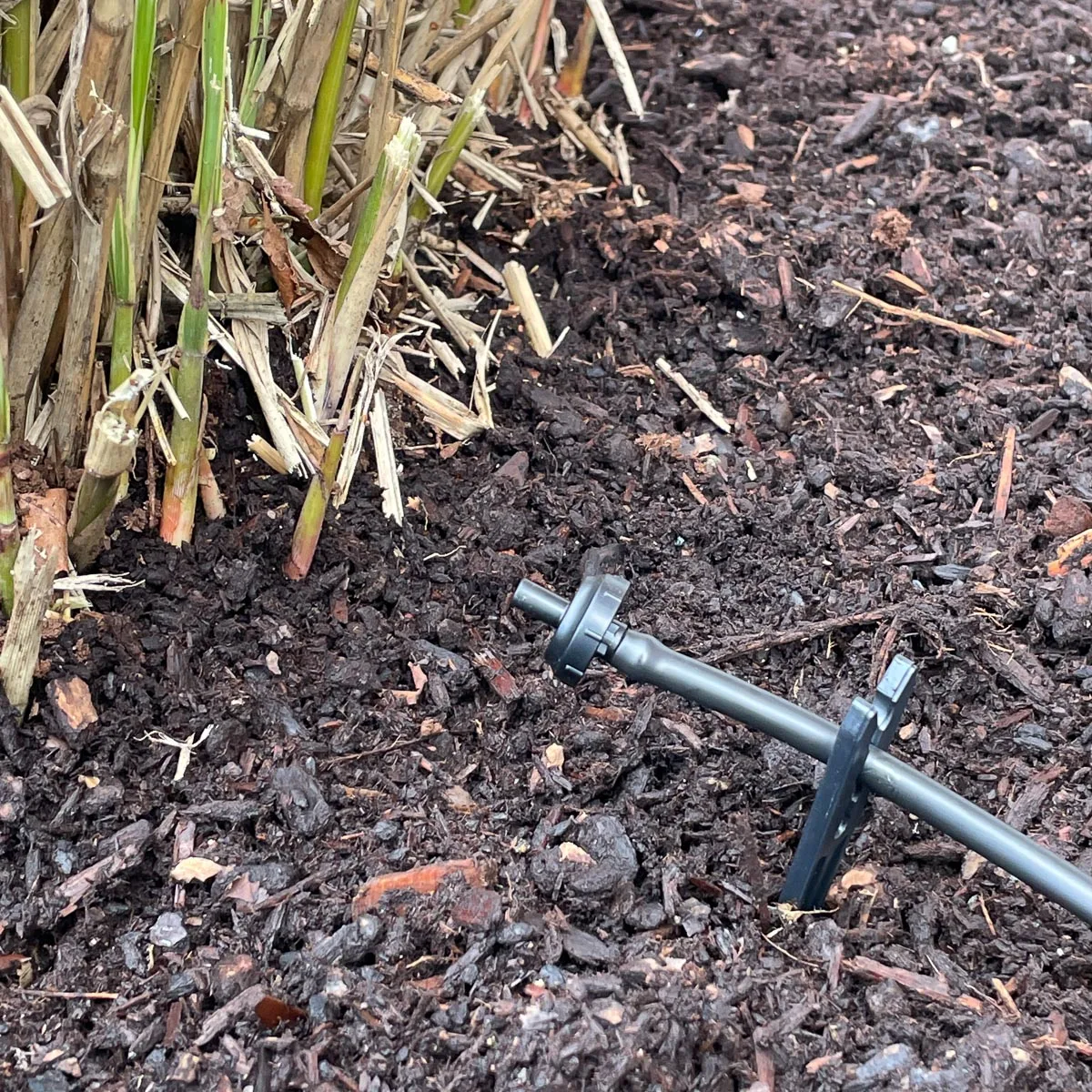
Another tip is to water the dahlias deeply but less frequently. This encourages the roots to reach further down into the soil for moisture.
Light requirements
Dahlias generally need at least 6 to 8 hours of full sun each day to bloom properly. Too much shade can result in weak, leggy plants with fewer or no blooms. On the other hand, extremely harsh sunlight might stress the plants and cause the blooms to fade quickly.
Pay attention to the path of sun during peak dahlia blooming season, which is typically late July through September. Your full sun areas in May or June when you planted out your dahlia tubers may be different later in summer when the days are getting shorter.
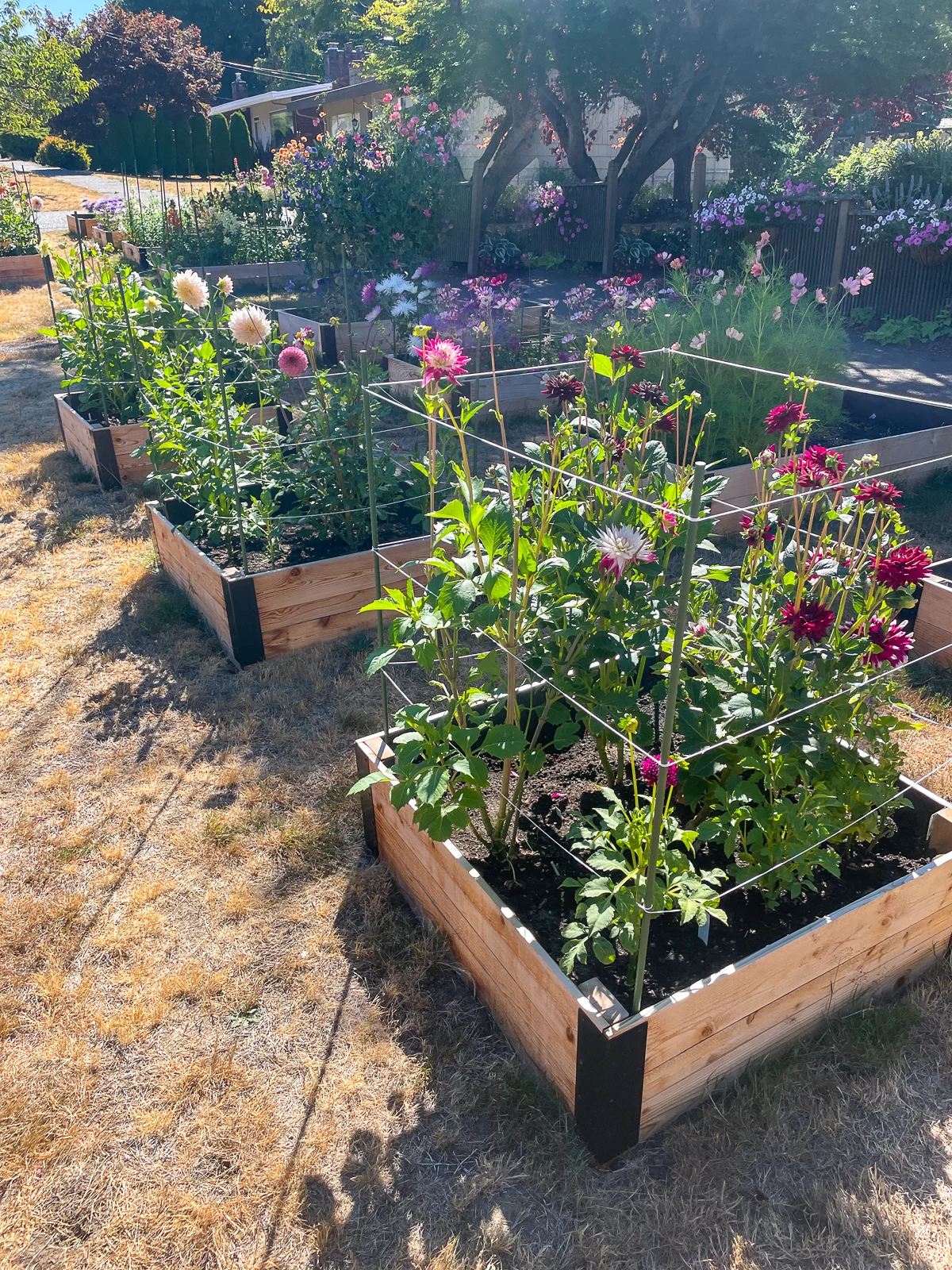
The photo above was taken in the morning, when a few of the raised beds are in partial shade from the Japanese maple tree. I've noticed fewer blooms on those plants, even though they get full sun in the afternoon.
Pests and diseases
Dahlias can be prone to various pests and diseases, and an infestation can quickly hinder the plant's ability to bloom. Identifying and managing these issues early on is essential for maintaining the health and beauty of the flowers.
Common pests that attack dahlias include aphids, spider mites, and slugs. These can suck the sap from the plants, weakening them and affecting bud formation.
Proper air flow can help prevent fungal issues like powdery mildew. I planted nine dahlias in each of my 3'x3' raised beds, so each one has a square foot of growing space.
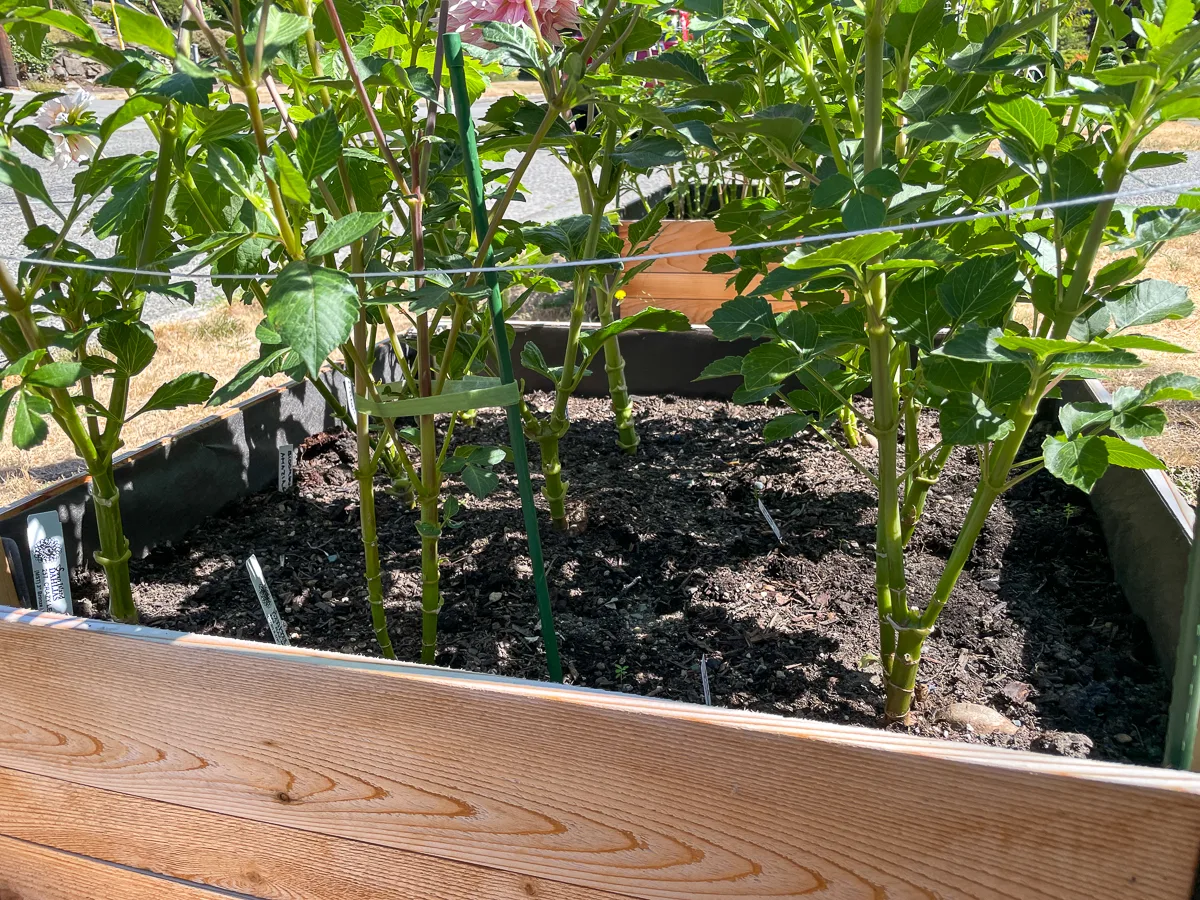
This is a little on the close side, especially when there's a wooden box around the base of the plants. I stripped the leaves from the bottom 6-8" of each stem to allow for proper air flow.
Improper pinching and deadheading
Deadheading dahlias and pinching the stems will make more flowers, but when done incorrectly, they can hinder the plant's ability to bloom. Understanding the right time and method for both of these practices can significantly improve the chances of seeing those beautiful flowers.
If you pinch dahlias at the correct time in the plant's growth, it will create more side shoots and a bushier plant. However, this will delay blooming while the plant recovers! Some gardeners will only pinch half of the stems on a plant, so they can enjoy the flowers sooner.
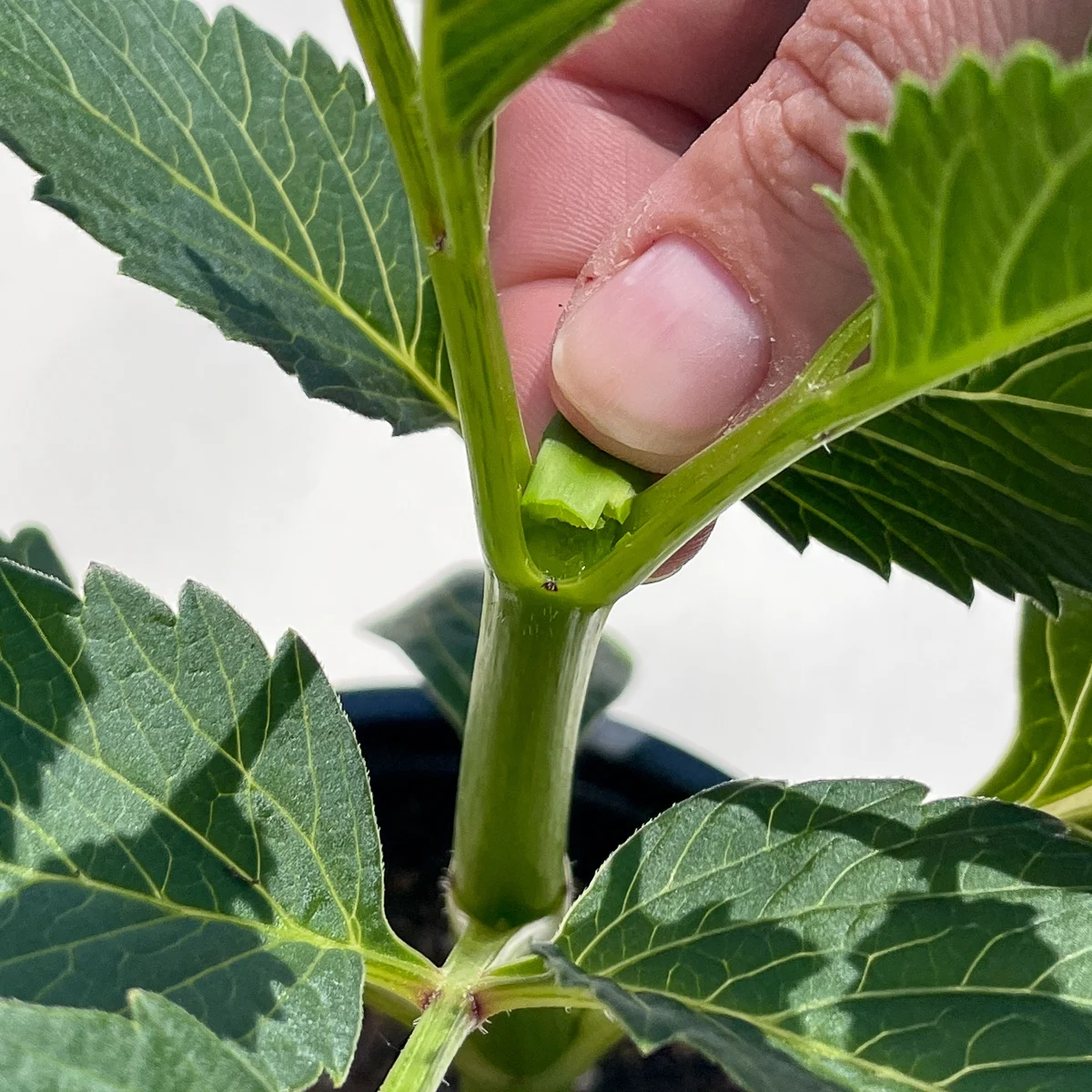
Once your plant starts to form buds, you may want to consider disbudding your dahlias. This allows it to focus all its energy on producing one large flower on a strong stem, rather than several smaller ones on weaker stems. But if you pull the wrong ones off, you could prevent it from blooming altogether!
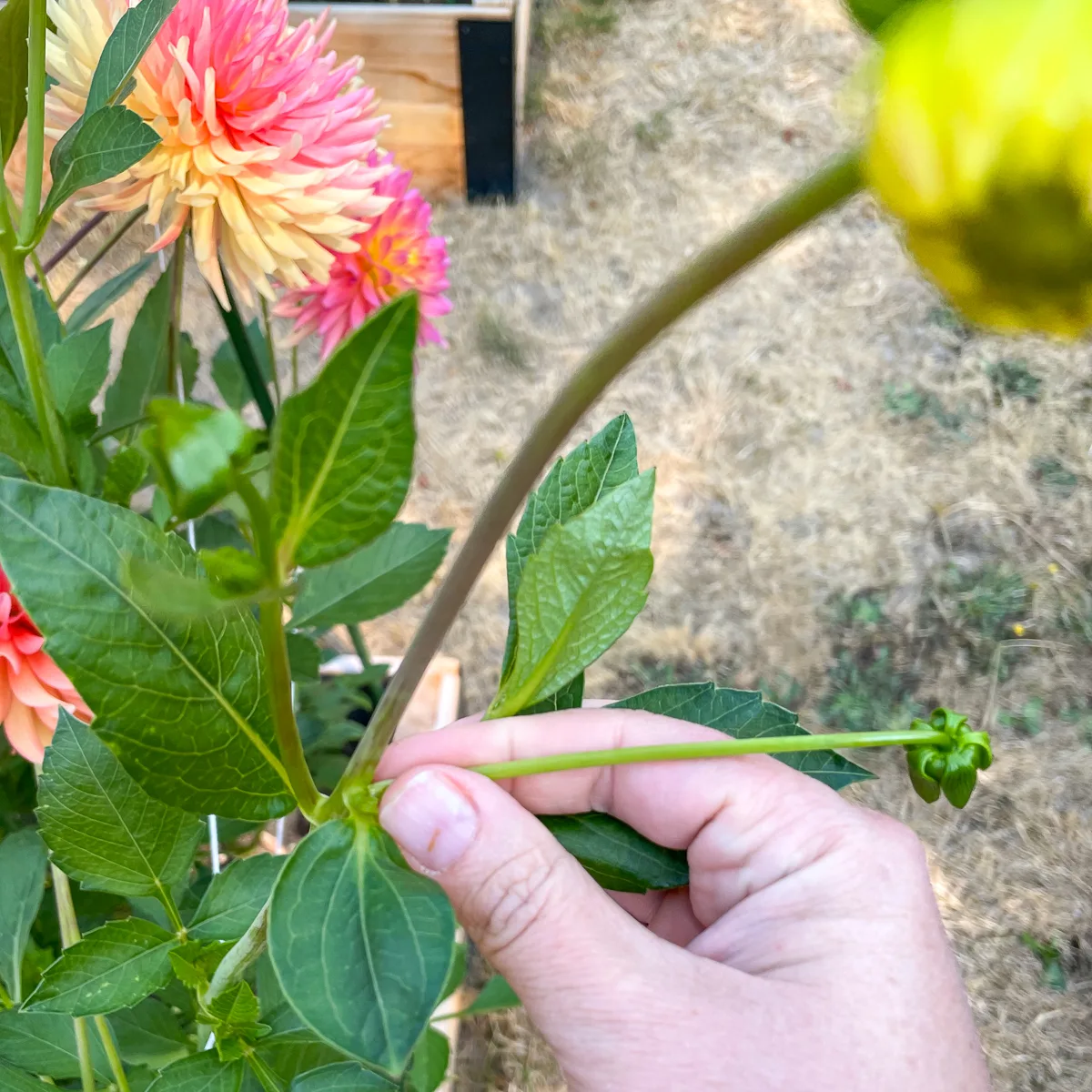
Deadheading, or removing spent flowers, is also essential for encouraging more blooms. If browning flowers are left on the plant, it will start to set seed and stop blooming altogether.
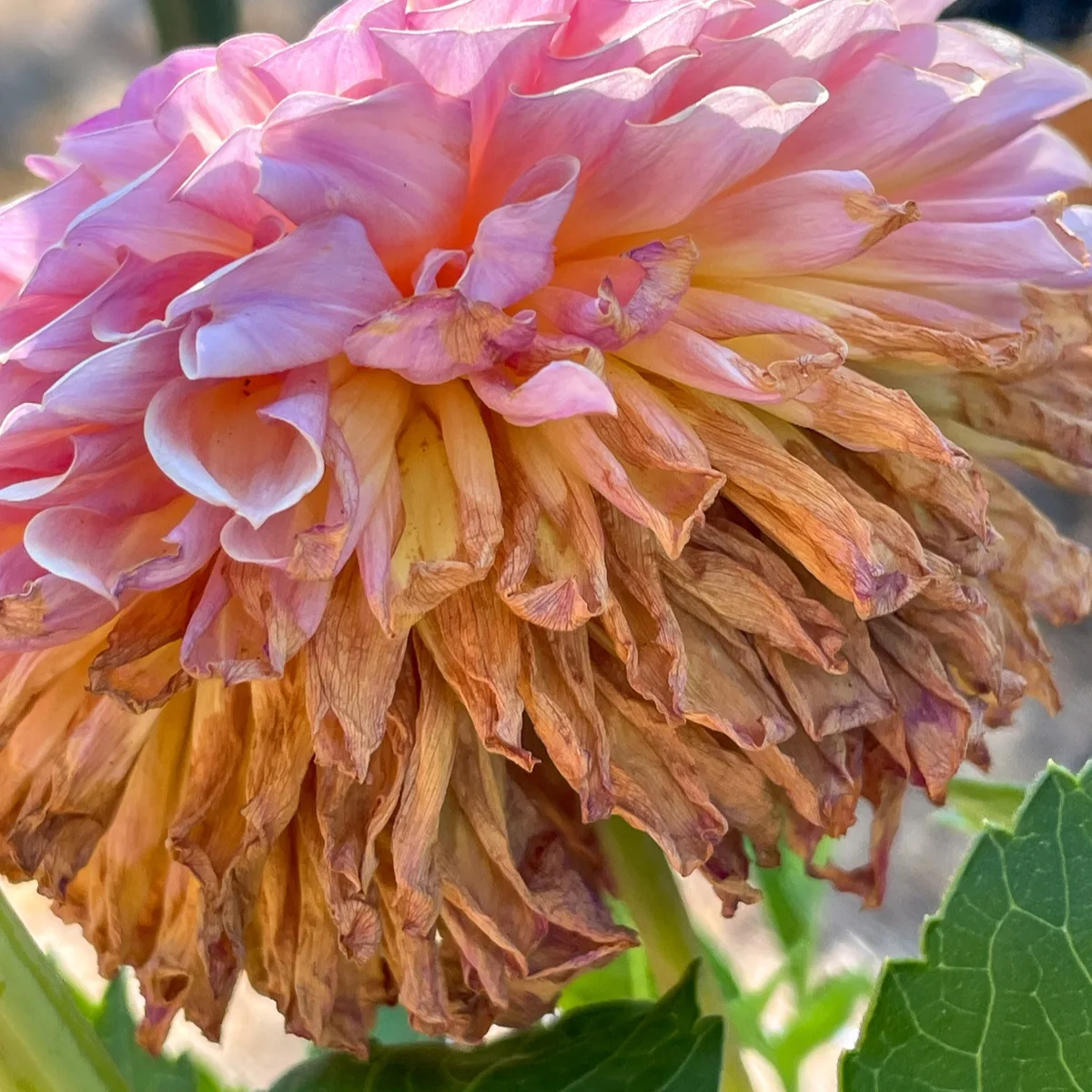
Climate and weather conditions
Climate and weather conditions have a substantial impact on the blooming of dahlias. Extreme weather, such as an unexpected cold snap in spring, or excessive heat in summer, can all affect the plant's ability to produce flowers.
Cold
Frost can be particularly harmful, damaging or killing the tender buds. If you live in a region with unpredictable frost, consider planting dahlias in pots that can be brought inside or using frost protection like cloths or frost blankets.
We had a long, cold spring that delayed the bloom time of many of my dahlias this year. In mid-August, there are still a few plants that haven't flowered yet!
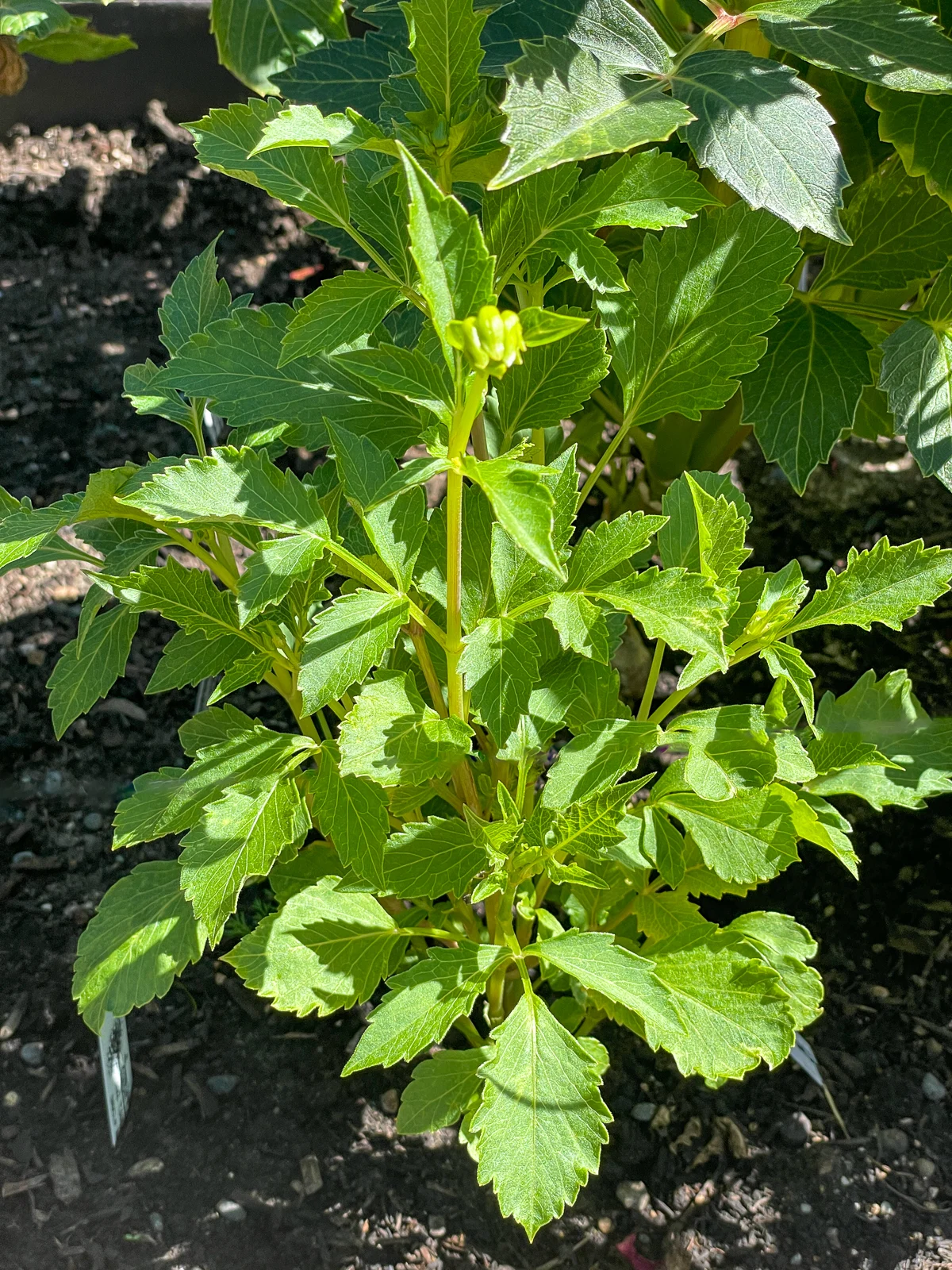
Wind
Wind can break stems and damage buds, setting back the growing cycle. Planting dahlias in a sheltered location or using windbreaks like fences or other plants can minimize this risk.
I placed four stakes in the corners of the raised beds, then ran twine around the outside edge to help support the dahlia stems. They're pretty exposed out there by the street, and the string helps to prevent damage by keeping them upright.
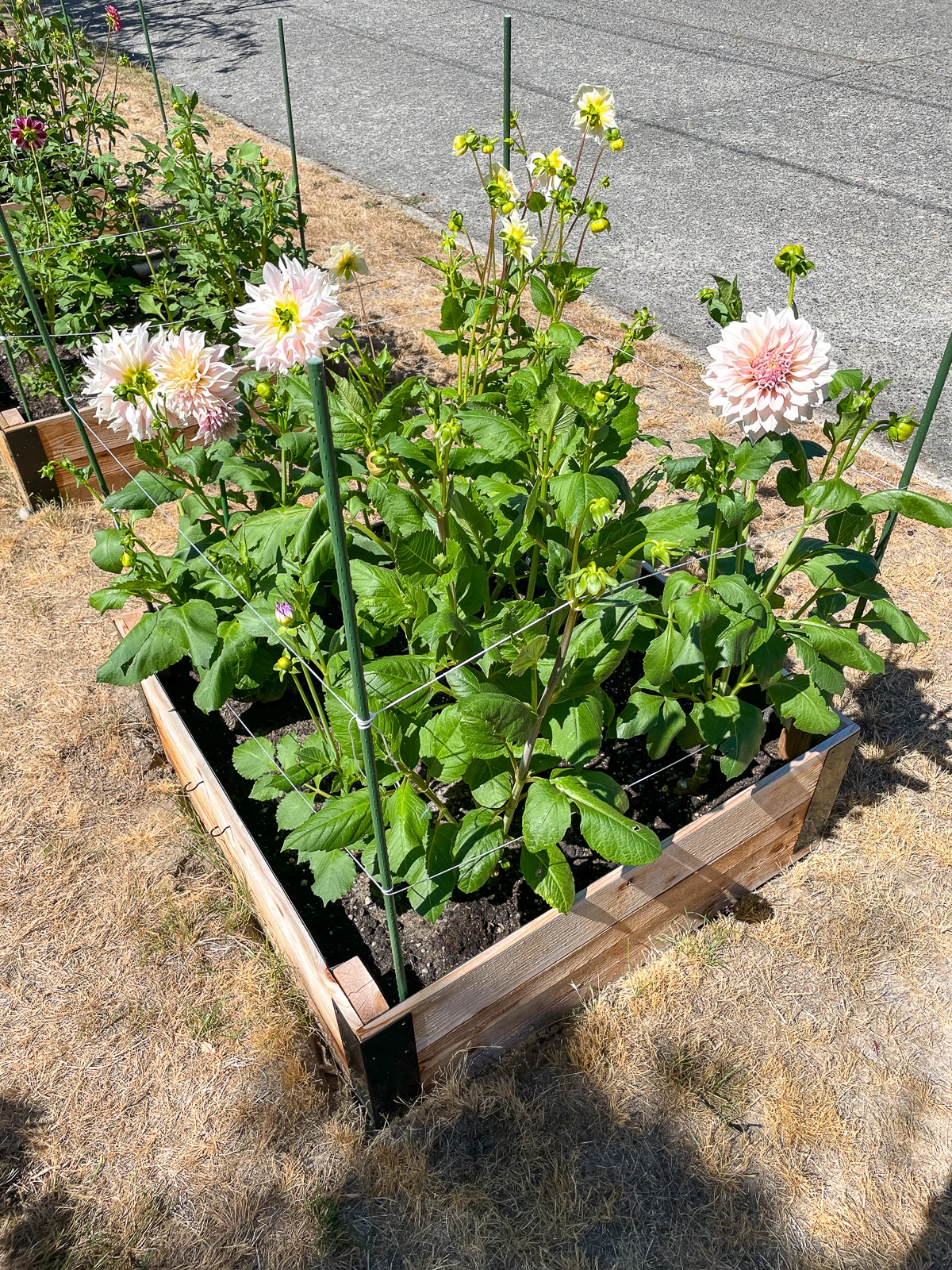
Heat
Excessive heat, especially during the blooming season, can stress the plants and prevent them from flowering. Providing shade during the hottest part of the day and maintaining proper watering can help alleviate this problem.
If you were able to pinpoint the reason why your dahlias aren't blooming early in the season, you should have plenty of time to correct the issue and still enjoy plenty of blooms before your first frost!
Some dahlia varieties just bloom later than others, so keep this in mind before you rip out the plant! It may be gathering all its energy for a gorgeous fall show. Be patient and take notes throughout the growing season, so you know what to do next year!

